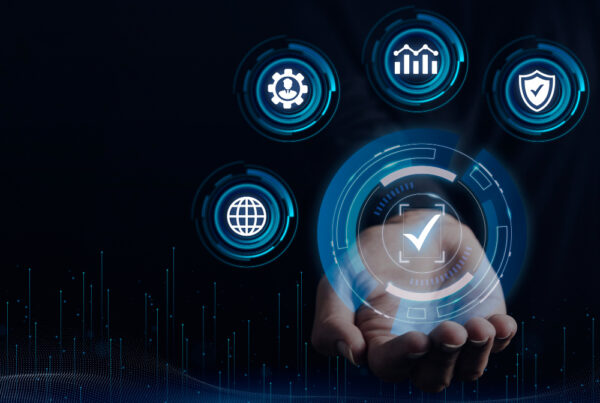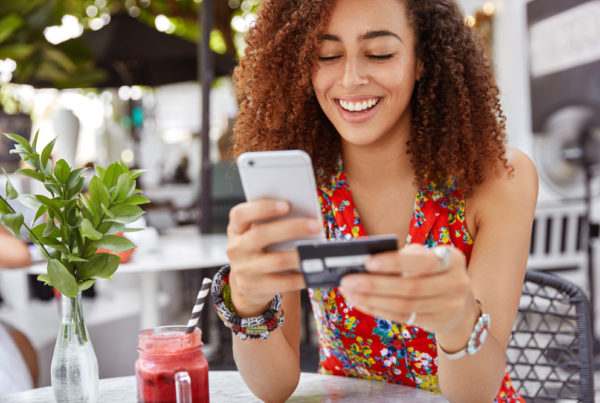According to the World Bank’s Global Findex database, 62 percent of adults (age 15+) across the world have access to formal financial structure i.e. having account with banks, microfinance institutions or other formal financial institutions. While women constitute nearly half of world’s population, but their financial inclusion is far below compared to men, thus impacting their contribution to economic activities, well being and growth. Globally, only 58 percent of women access to account in a formal financial institution as compared to 65 percent of men. From 2011 to 2014, there has been a considerable increase of 13 percentage points of women in developing economies having access to formal financial sector. While in relative terms the gains have been comparable to those among the male population during same time period, but in absolute terms half of women in developing economies do not have access to formal financial system. The gender gap in these economies for financial inclusion is 9 percentage points, which is evident from the Global Findex data.

There have been a number of barriers to women’s economic empowerment that have constrained their financial inclusion. They are not only restricted to demand side but there are barriers in access to formal financial institutions along with regulatory constraints. There have been number of constraints that have restricted women’s access of financial services:
- Regulatory Constraints: According to the 2016 report of World Bank Group’s “Women, Business and Law Project”, about 90 percent of 173 economies covered in the project have at least one law impeding women’s economic opportunities. For example, in some countries such as Saudi Arabia, women are not allowed to open the bank account. In some countries the women are required to furnish specific permission or documentation which is very difficult to obtain. Property or land is normally not titled in the name of women, which is considered a preferred form of collateral among banks. Bank account opening procedure requires identity documents, thus becoming a major barrier for undocumented women in developing countries. Gender gap related to identity document is significant in Middle East and South Asian countries.
- Supply Side Constraints: One example of this barrier is that women find it difficult to interact with male point of contact in banks as female point of contact is less. Women find uncomfortable to visit bank branches which predominantly has significant male population coming for their banking needs. Very few banks have women only branches. The product offerings are not targeted for women in developing nations, considering their lesser ability to manage the risk and high cost of bank account ownership. The access channels are also constrained. Women are burdened with household related work and do not have much time to travel to bank branches. The ATMs are sometimes not guarded that prohibit women to withdraw money as possibility of theft is higher. Further, the ATMs located in isolated places prohibit women from venturing there. There are lower rates of cell phone ownership among women so they again are constrained to access digital financial products such as mobile banking.
- Social Constraints: Women in developing nations have lesser control over economic resources. According to a study by United Nations in 2015, one-third women in these economies do not have control over household spending on major purchases. They remain dependent upon their husbands and one-tenth of women are not even consulted over how their own earnings are spent. Therefore, the bargaining power and social status of women within their household is significantly low. Further, women have less access to formal education and are mostly involved in lower-paying economic activities or are not working. Women are more sensitized towards privacy. A study by GSMA in 2015 reveals that women are 14% less likely to own a mobile phone than men and even if they do they are less likely to use it due to privacy issues.
- Mobile financial services have become the most promising mobile applications in the developing world. Mobile Money is slowly evolving as an ecosystem spread across commerce, healthcare, agriculture and other sectors. It is driving financial inclusion in developing economies and has tremendous potential in bridging the financial gender gap as well. While urban men have emerged as the early adopters of mobile money, the mobile operators are currently involved in expanding their services to reach to have a wider penetration that encompass rural regions as well. While low levels of literacy and mobile phone ownership among women are barriers, still with much simplified usage it can soon become popular among women as well.

GSMA conducted a study in 2016 to identify the gender gaps in the mobile money usage journey in Kenya that has become the most mature mobile money market in the world. Women have very specific needs for financial management:
- Convenience: Since women take care of the household so they are constrained in terms of time and hence they will be more inclined towards a financial product that is easy to use.
- Reliable: Women are known to save money for emergencies. So, the financial tool that they use to save money should immediately provide them their savings when they require.
- Secure: In many households, women are responsible for budgeting and taking care of essentials such as payment of school fees of the children etc. Women are concerned that the savings are safe and expenditure can be transacted securely.
- Privacy: Women want to independently save and spend the money. They do not like other people interfering with the way they manage the funds.
- Price Sensitive: Women are economic and bargain during spending of funds. They require a financial product that is cost effective.
- Risk Averse: Women are not known to take risks with their savings. Normally the savings are small and they want to ensure that the same can be liquidated easily as wand when required. Women are less likely to try new financial services compared to men as they perceive the risks involved.
Mobile Money has become a key enabler of financial inclusion in low and middle income economies across the world. According to the GSMA’s 2016 State of Industry Report on Mobile Money, there are about 277 mobile money services spanning 92 countries and having more than half a billion active accounts. Mobile Money has created several opportunities for people to manage their savings, invest safely and manage their expenditure in an efficient manner. Mobile Money can empower women and can generate strong appeal among them by creating a sense of security, convenience and reliability of funds.
A typical customer journey of mobile phone adoption has several stages:
While the ownership of mobile phone among women is cause of concern, the key is to focus transform the women already owning the mobile phone and get them onboarded to Mobile Money platform. Once the women have understood the importance of mobile money the bigger hurdle is crossed and thereafter they can responsibly adopt the mobile money. As per GSMA Report:
“It is estimated that, globally, 80 million unbanked women receive government wages or transfers in cash, 210 million unbanked women receive cash payments for the sale of agricultural goods, 585 million women pay for utilities in cash, and 225 million women pay school fees in cash.” [5]
There is a huge opportunity of digitalizing these payments and an estimate suggests that mobile money can unlock an estimated $20 billion market in Africa if mobile money accounts are opened for women as it will generate new revenue streams. Using mobile money platform, following are the key recommendations that can increase adoption of mobile money usage and thus bridge the gender gap in financial inclusion:
- Women as Brand Ambassadors of Mobile Money: The key factor that has led to mobile money growth is developing economies is the agent network and its reach in the geographies having no banking infrastructure. The mobile money agents directly interact with consumers by getting them onboarded and doing the KYC (Know Your Customer) verification process to combat frauds. They support the consumers throughout their mobile money journey by disbursing cash or digitizing money. Thus the agent network becomes the backbone of mobile money operations. In 2006, there were only 21584 registered agents in the countries where mobile money services were live. By the end of 2016, this number has gone upto 4.3 million registered agents. To increase mobile money usage among women, it is recommended to have women agents that become representatives or brand ambassadors in the region. Female agents will help to build confidence and trust among women to adopt mobile money and women will be more comfortable in interaction with their female counterpart rather than with male agents. Few key focus points are:
- Female agents can be promoted as Brand Ambassadors of mobile money representing a specific region that can bring financial literacy among women in that region.
- Female agents can be incentivized with attractive commissions when they onboard new women consumers to mobile money. In order to promote usage, the agent who onboards the consumer can get commission when the consumer does first transaction other than cash in or the commission can be spilt between first two transactions and so on.
- In few countries where women are not allowed to freely move outside their home, female agents can visit their home and get the women onboarded so as to mobilize their savings and secure their money which is stacked at home in the form of cash.
- In few countries, women cover their face and they are hesitant to remove the veil in front of male agents so that their photo can be taken. However, if its a female agent then they can get their photograph taken and KYC done.
Zoona, a startup in Zambia engaged in building mobile money agent network, has found that women tend to be more organized, better at settling credit and reinvesting in their business. Currently they have 70% of the agents as female.
“MoMo Angel Campaign” pilot was launched by Lonestar Cell MTN to recruit and train women as agents in October 2016 in Liberia. This has become quite successful and Lonestar Cell has launched attractive schemes to help women purchase mobile phones. The agents are incentivized by not just commission but also financial aid for the education of their children, preferably a girl child.
- Promotions and Marketing Campaigns around Women: In order to promote mobile money, it becomes essential that women are portrayed in billboards as well as TV and radio ads. The literacy among women is less and it is difficult for them to understand the value of mobile money services through pamphlets. With the presence of women in the campaigns, the female population can easily relate and realize the importance of mobile money. The mobile money providers can run periodic campaigns such as giving bonus money or airtime of specific sum for women who get registered within the duration of promotion. The marketing campaigns should highlight the two very important aspects:
- Security of Mobile Money
- Convenience of usage by showcasing the consumer journey through the agent network.
Mobile money promotions can also be bundled with selling cell phones to women at attractive discounts. Since women will now see value in mobile money, so they will try to own the mobile phone. Documentation process should be made smooth for women such that women not having ID cards can get the same created through the mobile money agents. There can be a initiative launched by mobile money providers to help women get their national IDs or other KYC proofs at nominal or no cost.
Telesom in Somaliland developed TV advertisements showing women using its mobile money service ZAAD for merchant payments and savings — the two use cases it thought would be most appealing to women.
- Disbursing Government Grants: Government can make use of the mobile money services to transfer grants to the female population which is below poverty line. This becomes a fast, more secure and less expensive way to disburse funds. The funds will be credited directly to the beneficiary’s account and then can be put into better use by the beneficiary. In order to promote female literacy, the government can disburse stipends through mobile money which can only be used by parents to pay for school fees or buy books. The government grants getting disbursed through banks make women to travel to bank branches by spending sum in travelling and then queuing up to get the funds. Further, they can be robbed of the cash on way back to home. When they are disbursed through mobile money, the women can make the better use of funds or get the cashout done through a nearby agent.
In June 2014, Easypaisa signed an agreement with Sindh Education Reform Program (SERP) for educational stipend disbursements. Under the SERP program, Easypaisa is providing disbursement services for stipends. The stipend is offered to more than 400,000 girls studying in classes 6 through 10, subject to 80% attendance. In this way they are able to reach rural areas.
- Disbursement of Medical Aids by NGOs: Women health conditions are quite poor in developing nations that are due to maternal deaths, poor nutrition among girls and high prevalence of HIV. The NGOs and UN can partner with mobile money services so that the aid reaches directly to the beneficiary. This not only reduces the cost to disburse financial aid but also prevents corruption and ensures that full money reaches the women in need. Women can then make use of the money to purchase for medicines. Mobile money providers can also collaborate with insurance companies and launch micro savings and micro insurance product for women. The women can save small portions of money on which insurance cover is provided and premium gets deducted automatically every month from the new micro savings mobile money account. Crowd funding can also be done through mobile money
Organizations like World Food Program are disbursing aid in countries like Kenya, Cameroon and Zimbabwe, as mobile money to women’s account which cannot be cashed out. It can only be used to purchase meal vouchers so that the problem of malnutrition among women gets addressed.
Vodacom Lesotho has collaborated with Lesotho Ministry of Health, so as to disburse aids to pregnant mothers and HIV positive children. Through this initiative, not only the disbursement of aid but tracking of patients and sending reminders to them is also done.
- Family Wallet: Family wallet is a concept where a single mobile money account can be shared between the members of the family. In economies where mobile phone ownership is quite less among women, family wallet concept can be used where women can be onboarded on a mobile money account owned by their husbands. The access of services and limits on mobile money usage can be controlled for each family member. The women can thus deposit their savings in cash to this common family account which can then be put into various uses such as paying for bills, purchasing goods etc. Family wallet can have another variant where single mobile money account is linked to multiple mobile numbers of the family. With the family account, women can do better planning and budgeting and control the expenditure.
- Differential Pricing of Mobile Money Services: Women are more price sensitive than men and look for cheaper alternatives while making transactions. Therefore, mobile money providers can charge less for same service if the consumer is a woman. Gender based differential pricing can attract a large number of women to get registered to the mobile money services. The family can encourage the women to open mobile money accounts to get same service delivered at lesser rates. Merchants can provide cash back and loyalty points to women on making purchases. Mobile operator can distribute free airtime or joining bonus to women that register to mobile money services. Similarly attractive interest rates can be offered on micro loans disbursed using mobile money. Mobile money providers can also provide interest on the savings by women in their mobile money account. Special campaigns can be launched during International Women Day, Mother’s Day etc where charges can be waived off for transactions done by women consumers so as to make them feel special and also promote the usage of services.
- Group Savings: Informal saving groups have come up in the absence of banking infrastructure. Mobile money providers can launch group savings product so as to move away from traditional pooling of cash by the groups that becomes difficult to operate and manage. Women can form groups within the locality and pool funds in a group account. Al members of the groups can view the balance and transactions done on group account so that transparency is maintained. Borrowing can be done on a rotating basis and each group can have its own rules for disbursing of funds out of the group savings account.
Econet has launched a similar product known as “Savings Club” on its mobile money (Ecocash platform). There is a Club Chairman who is the owner of club account. There is one club secretary and a club treasurer. Club member can place a request to borrow a certain sum from the club. The request is required to be approved by club chairman, treasure and the club secretary. Post which funds can be disbursed and the club statement can be accessed by any club member. 60% of all Ecocash Saving Club users are women.
References
- https://datatopics.worldbank.org/financialinclusion/
- https://www.cgap.org/topics/women-and-financial-inclusion
- https://www.gsma.com/mobilefordevelopment/wp-content/uploads/2016/02/Connected-Women-Women-and-Mobile-Money-Insights-from-Kenya-Nov15.pdf
- https://www.gsma.com/mobilefordevelopment/wp-content/uploads/2017/03/GSMA_State-of-the-Industry-Report-on-Mobile-Money_2016.pdf
- https://www.gsma.com/mobilefordevelopment/wp-content/uploads/2017/04/Mapping-the-mobile-money-gender-gap-Insights-from-Cote-d%E2%80%99Ivoire-and-Mali.pdf
- https://thebestofzambia.com/orgs/zoona/
- https://www.oecd.org/aidfortrade/casestories/casestories-2017/CS-33-Telenor-Group-Disbursing-girl-stipends-via-Mobile-Money-in-Pakistan.pdf
- https://www.itweb.co.za/index.php?option=com_content&view=article&id=151328
- https://cassavaconnect.com/mobile-money/#1461686817194-15bfde88-e87f






